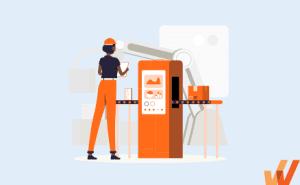Digital Transformation in the Retail Industry in 2024
- Published:
- Updated: July 2, 2024
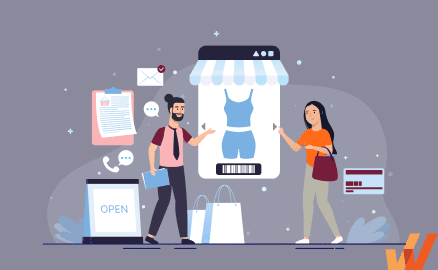
Digital transformation in the retail industry is about implementing new technology to create better customer experiences, optimize business processes, enable retail workers, and build more agile, growth-oriented business models.
According to the latest research from Gartner, more than 50% of all consumer spending will be done online in 2024 and 60% of it will be done through mobile devices. Only mobile-centric retailers who embrace the digital revolution will be the ones who thrive and grow.
However, retail transformation goes far beyond simple eCommerce and mobile purchasing experiences. It includes integrating new and emerging technologies like AI, big data, AR/VR, and more to transform retail operations and models to sustain growth, keep up with competitors, provide better customer experiences, and continue to innovate.
What Is Retail Digital Transformation?
Retail digital transformation is the infusion of technology in the retail industry to enhance operational efficiency, improve customer experience and drive growth. Retail digital transformation includes POS systems, personalized shopping experiences, self-checkout systems, cost optimization, VR showrooms, branded mobile apps, geofencing, and AI-powered product recommendations.
What’s Driving the Demand for Digital Transformation in Retail?
The retail industry is a $7T global market employing 1.8B+ people. Additionally, there are 3.2B consumers worldwide who shop online. Gone are the times when retailers created value and earned loyalty only through factors like competitive pricing, store proximity, convenience, and variety. The current times are different from the one-size-fits-all era of communications and promotions. Personalization in communications and marketing tactics is necessary to retain customers and bring in new ones.
Retailers can now use data and insights to increase the frequency of purchases of their existing customers and target high-value customers of traditional retailers.
The demand for digital transformation in the retail industry has increased because it has the potential to directly drive revenue and growth for retailers.
Challenges in the Digital Transformation of the Retail Industry
Here are a few challenges of digital transformation in the retail industry.
1. Coping with change
Retailers managing their business traditionally might find it challenging to shift to a new system. This might create resistance to change to digital methods from in-store employees, store managers, corporate employees, and customers.
Large retailers must communicate change well in advance to secure buy-in from key stakeholders and everyday technology users to understand their problems and build solutions contextual to their needs.
2. Budget constraints
Digitally transforming a retail company is a costly affair. It involves both tech and human resources working together to implement an efficient management system. A significant challenge faced by medium and small-scale retailers is a lack of funds to enable a digital transformation.
3. Complexity
Implementing technologies such as blockchain, internet of things, and augmented reality is complex. The intricate details, analysis, steps, and procedures can be confusing, and people with little or no expertise can find it hard to navigate through a digitized retail system, leaving many retail businesses to turn to a digital transformation consulting company.
Even more familiar retail technologies like POS systems and self-checkout may seem like they’ve reached critical adoption. However, these technologies often still cause friction for customer and employee end-users, causing poor experiences, frustrated customers, and negatively impacting team member productivity, making POS implementation difficult.
Software clicks better with Whatfix's digital adoption platform
Enable your employees with in-app guidance, self-help support, process changes alerts, pop-ups for department announcements, and field validations to improve data accuracy.
Benefits of Digital Transformation in the Retail Industry
Let’s discuss some of the most significant benefit of digital transformation in the retail industry
1. Increased customer retention
Retailers can segment their customers, analyze their buying behavior, set the customer strategy right, and then trigger personalized communications and promotions.
Let’s take an example of a fitness enthusiast who regularly purchases health supplements from a retailer. Using data and insights, a personalized promotional campaign on health supplements can be created for them to increase purchase frequency and retention.
A case in point can be the digital transformation of Target’s retail experience. Target is the 7th largest retailer in the U.S.A., headquartered in Minneapolis, Minnesota. Target is using sophisticated technology such as artificial intelligence, machine learning, and predictive analytics to identify the needs of their customers based on their past store purchases. This boosts customer experience and enables mass personalization for businesses, leading to more considerable customer retention.
2. Providing useful market insights
Consumer data analysis can be utilized to generate helpful market insights. These market insights help outline specific actions and strategies that retailers can take to increase their growth and profitability. The insights also help retailers know their customers better and establish a high sense of intimacy with them, which is a crucial growth-driving factor.
3. Implementing efficient marketing campaigns
Through digital transformation, retailers can collect customer data to create personalized and targeted marketing campaigns using technologies such as CRM, data analytics, and marketing automation. This allows retailers to identify patterns and trends while providing insights into their target audiences. Access to such information reduces the cost of marketing activities and helps tweak marketing campaigns with changing consumer behavior.
4. Easier inventory management
Using technology and data in the retail industry leads to efficient inventory management. It enables retailers to use digital technologies to streamline and automate their inventory processes. Digital transformation in retail helps increase operational efficiency, quick order fulfillment, warehouse management, figuring out lead times, and safety stock to avoid stock-outs.
5. Improved customer service
By using digital technologies, retailers can create an omnichannel customer experience, allowing customers to receive help and support across multiple channels, including websites, mobile apps, email, and live chat. Digital transformation provides self-service options for customers to put up their queries and grievances on the chatbot, allowing round-the-clock real-time personalized customer service. Such technology allows the customer to move through the customer journey with the most negligible interactions allowing cost efficiency for retailers.
8 Examples of Retail Digital Transformation
Emerging technology is changing the way enterprise retailers operate. Let’s explore a few of the most impactful retail digitalization examples changing the industry.
Today, enterprise retail point of sale (POS) systems like NCR, Lightspeed Retail, iQmetrix, Square, and more have undergone a significant transformation, playing a pivotal role in reshaping enterprise retail operations. These modern POS systems are no longer just transactional hubs; they have evolved into comprehensive retail management solutions. Integrating advanced technologies like cloud computing, AI, and data analytics, these systems offer real-time inventory management, sales tracking, and customer data analysis.
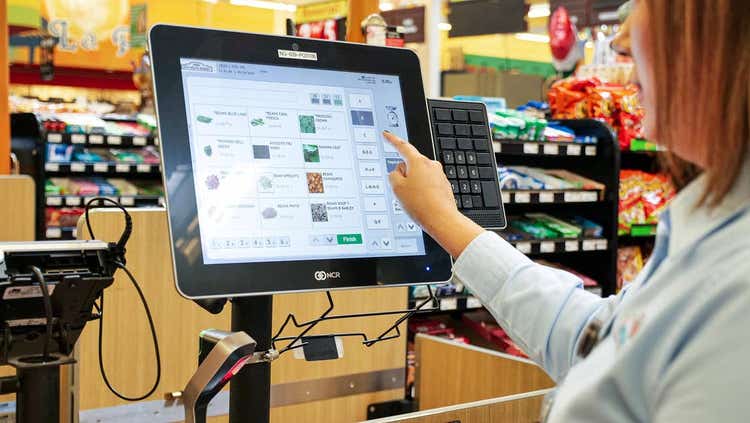
This integration enables retailers to make informed decisions quickly, improving inventory turnover and reducing waste. Furthermore, the incorporation of mobile POS systems allows for greater flexibility in customer service, enabling transactions anywhere in the store, reducing wait times, and enhancing the overall customer experience. Additionally, POS systems now seamlessly integrate with other business tools, such as CRM and ERP systems, ensuring a unified and efficient operational workflow.
Modern POS systems play a critical role in personalizing customer experiences, using AI-driven insights to offer tailored recommendations and promotions, thereby increasing sales and customer loyalty. The integration of omnichannel capabilities ensures a consistent shopping experience across online and offline platforms, crucial for meeting the modern consumer’s expectations.
This seamless integration also enables retailers to gather comprehensive data across all channels, offering deeper insights into customer behavior and preferences. Moreover, enhanced security features in these systems ensure safe and secure transactions, building customer trust.
For large-scale retailers, the modern POS system is not just a tool for sales transactions but a cornerstone for strategic decision-making, operational efficiency, and customer relationship management, marking a significant leap in the digital transformation of the retail industry.
Leveraging data analytics and machine learning, retailers can tailor offerings to individual customer preferences, enhancing the shopping experience and fostering loyalty. This customization, evident in online browsing, targeted promotions, and in-store interactive experiences, increases customer engagement and purchase likelihood. This approach is crucial for large-scale retailers aiming to maintain a competitive edge and build a deeper connection with their customers.

For enterprise-level retailers, integrating AI-driven personalization into digital transformation strategies is key. It not only boosts conversion rates and average order values but also provides insights for inventory and marketing optimization. As retailers refine their AI models with ongoing data analysis, the effectiveness of personalized experiences continuously improves. This shift towards advanced personalization is a core component of digital transformation in the retail sector, essential for large retailers adapting to changing consumer behaviors and market dynamics.
Self-checkout systems have been on the verge of mass retail adoption for a decade. The main reason adoption hasn’t occured is friction in the customer experience, with tedious machines, self bagging, and errors in the checkout process. With new self-checkout machines that overcome many user experience challenges, mass adoption of self-checkout has already happened.
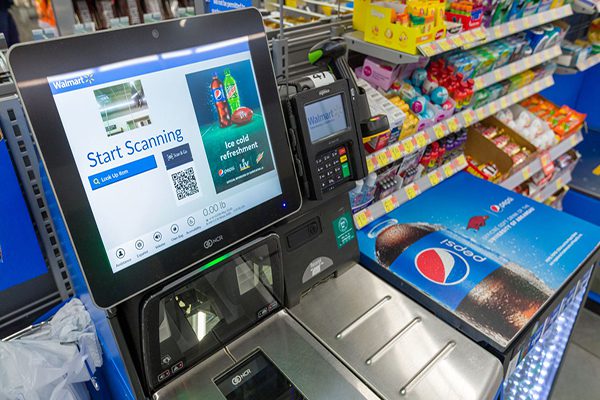
Cost optimization enables retailers to maximize the revenue from their products with big data on buying habits and trends, predictions in supply chain, and more. This process is critical in the current retail landscape, which is characterized by rapid technological advancements, changing consumer behaviors, and intense competition. H
With AR/VR and related augmented overlay technology, retailers are now providing customers with digital projections to see examples of how potential purchases could look in their home or on themselves. Examples include brands like:
- IKEA using AR to place furniture in your home to conceptualize how it will fit into your home’s esthetic.
- Warby Parker using AR to help online shoppers try on glasses without having to physically send trial pairs to homes.
- BWM using VR for customers to take virtual test drives.
- ASOS using AR to for virtual fitting rooms.

All major retailers – from Target, Walmart, Urban Outfitters, Best Buy, etc. – all now have custom, branded mobile apps that customers can download to their smart devices. This provides mutual benefits to customers and retailers, with customers receiving app-exclusive deals and rewards, and retailers having a new channel to directly communicate, market, and sell to customers.
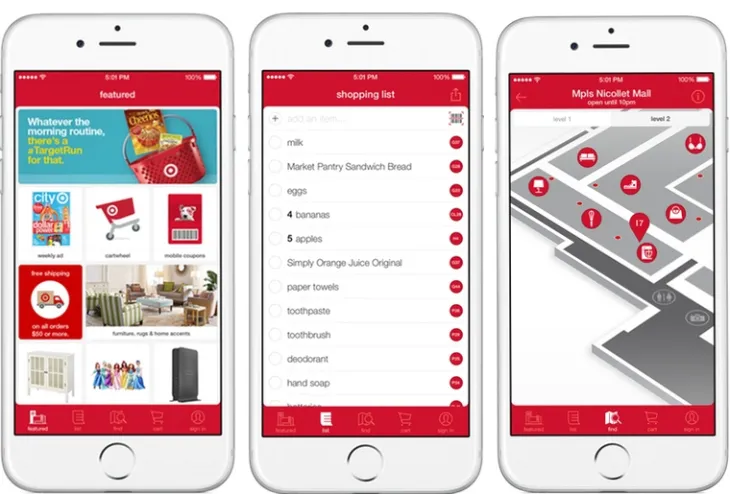
Geofencing empowers brands to target customers that enter specific “fenced” locations. For example, Meijer uses geofencing to target customers in its stores to offer customized information depending on their location in the store, as well as offer virtual coupons. The GAP used geofences around physical locations that were near large billboard ads, allowing them to offer people in those areas virtual discounts related to the physical ad.
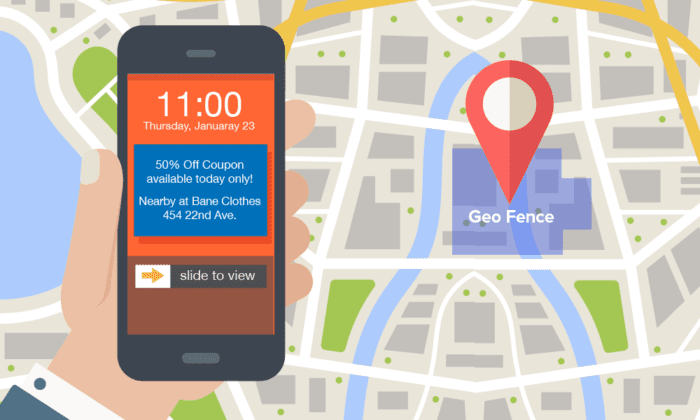
Retailers must serve customers with both an online and in-store shopping experience and create a unified, omnichannel customer experience. With headless commerce technology, retailers can customize customer experiences no matter what channel they’re using – bringing better shopping experiences to customers and introducing new digital channels.
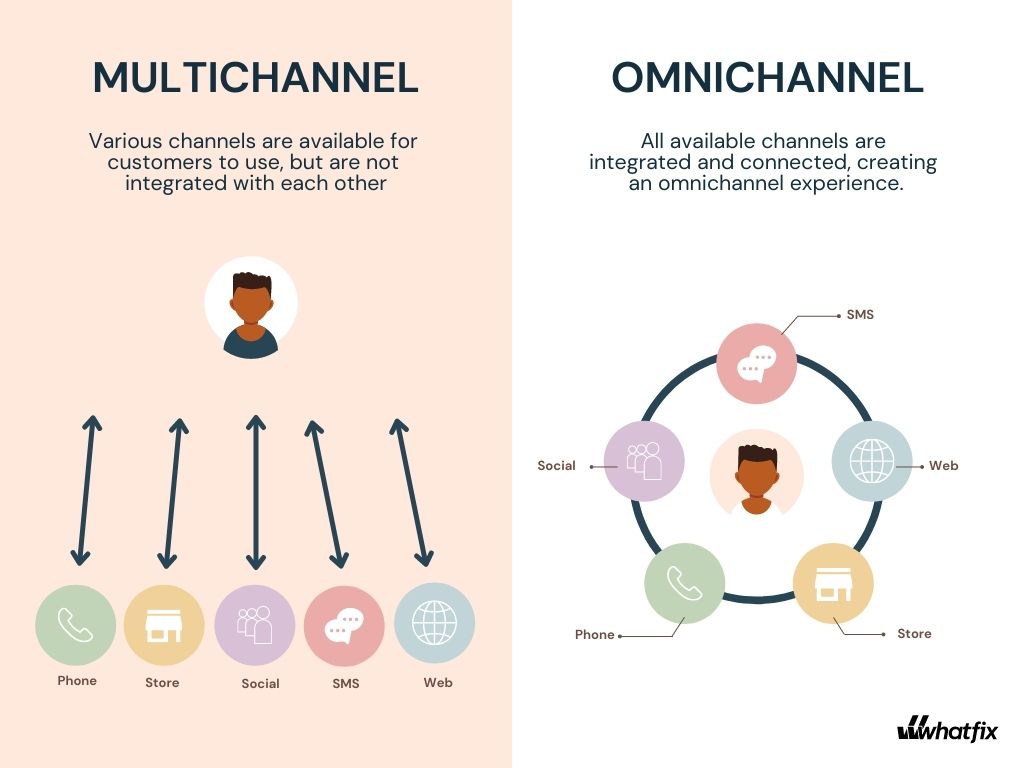
Digital Transformation Trends in Retail
Here are some of the major digital transformation trends in retail for the year 2024.
Retailers today are leveraging big data to understand their customers better. The modern customer expects a personalized and efficient shopping experience. The retailers are catering to the customer experience demand using predictive and prescriptive analytics, allowing them to manage their inventory, merchandising, and devising a procurement strategy.
Decisions informed by big data directly help retailers get a better return on investment.
Customers involved in both retail and online touchpoints are likely to become more valuable to the retailer. Omnichannel retailing strategy involves connecting and synchronizing business transactions with the customers via different channels such as social media, emails, and website. Omnichannel helps in creating a seamless shopping experience for the customer.
Home Depot, an American multinational home improvement retail corporation, has created a personalized omnichannel shopping experience through offerings such as click-and-collect, and personalized marketing.
The Internet of Things in the retail industry has transformed how products are tracked in the supply chain. GPS and RFID technology has been a game changer for retailers.
The Internet of Things has also played a role in controlling shoplifting using geofencing. According to the association for shoplifting prevention (NASP), more than $25 million worth of merchandise gets stolen from retail shops each day. RFID tags allow store operators to create a virtual barrier around retail locations which helps in controlling theft.
Retailers are adopting blockchain technology for its increased security, efficiency, and transparency. Blockchain in retail is not limited to digital payment methods. It helps track products in the supply chain and allows retailers to store information in a decentralized ledger.
Nestle adopted the blockchain technology in 2017. The Swiss giant has been using blockchain to make product tracking smooth, easy and standardized. Over the years, it has expanded the use of blockchain to its Swedish coffee brand Zoegas.
Augmented reality creates a unique digital experience. Brands can leverage this experience to enrich the interactions between the customer and the company. The “try and buy” technology is a part of the augmented reality experience. Brands are now creating virtual simulations to help users interact better with the product from the comfort of their homes. The creation of virtual stores using augmented reality combines the traditional retail experience with e-commerce in the best possible way.
As consumers gravitate toward online shopping and other online purchasing options, digital transformation is more vital than ever for any retail business that wants to stay current. Retailers who stick to traditional methods are highly likely to be knocked out of the market by tech and data-driven organizations.
To configure their organizations for success and growth, retailers need to stay updated with the current trends and technologies used in retail businesses.
To aid your digital transformation efforts and reach your potential with new technology, implement a digital adoption platform like Whatfix. Whatfix simplifies enterprise software adoption, improving the ROI of your technology stack.
To learn more about how Whatfix drives digital transformation, click here to schedule a free demo with us today!
Thank you for subscribing!
